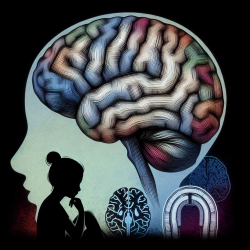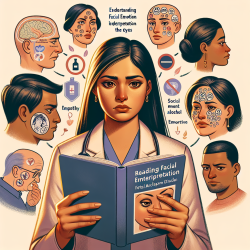Anorexia nervosa (AN) is a severe eating disorder that predominantly affects adolescent girls. Recent research has provided insights into the neurobiological underpinnings of AN, particularly concerning white matter properties in the brain. This blog post explores the findings from the study "Abnormal white matter properties in adolescent girls with anorexia nervosa" and discusses how practitioners can utilize these insights to improve therapeutic outcomes and encourage further research.
The Study at a Glance
The study employed advanced neuroimaging techniques to assess white matter microstructure in adolescent girls diagnosed with AN compared to healthy controls. Using diffusion MRI (dMRI) and quantitative MRI (qMRI), researchers evaluated fractional anisotropy (FA) and R1 relaxometry as indicators of myelin content within the brain's white matter tracts.
- Participants: 15 adolescent girls with AN and 15 age-matched controls.
- Methods: dMRI analyzed with tractography and qMRI for measuring R1.
- Findings: Significant differences in FA and R1 were observed, suggesting alterations in myelin content among the AN group.
Implications for Practitioners
The findings underscore the importance of considering neurobiological factors when treating adolescents with AN. Here are some ways practitioners can apply these insights:
- Holistic Approach: Incorporate neuroimaging assessments into treatment plans to better understand individual patient needs and tailor interventions accordingly.
- Focus on Myelination: Consider therapies that support myelin health, such as nutritional interventions rich in essential fatty acids crucial for myelin production.
- Monitor Cognitive Functions: Regularly assess cognitive, social, and emotional functions that may be affected by changes in white matter properties.
Encouraging Further Research
The study invites further investigation into the relationship between white matter changes and specific physiological or cognitive functions affected by AN. Future research could explore:
- The impact of treatment duration on white matter recovery.
- The role of different therapeutic interventions in reversing or mitigating white matter changes.
- The potential for using neuroimaging as a predictive tool for treatment outcomes.
By expanding our understanding of the neurobiological aspects of AN, we can develop more effective treatment strategies and improve outcomes for those affected by this challenging disorder.
To read the original research paper, please follow this link: Abnormal white matter properties in adolescent girls with anorexia nervosa.










